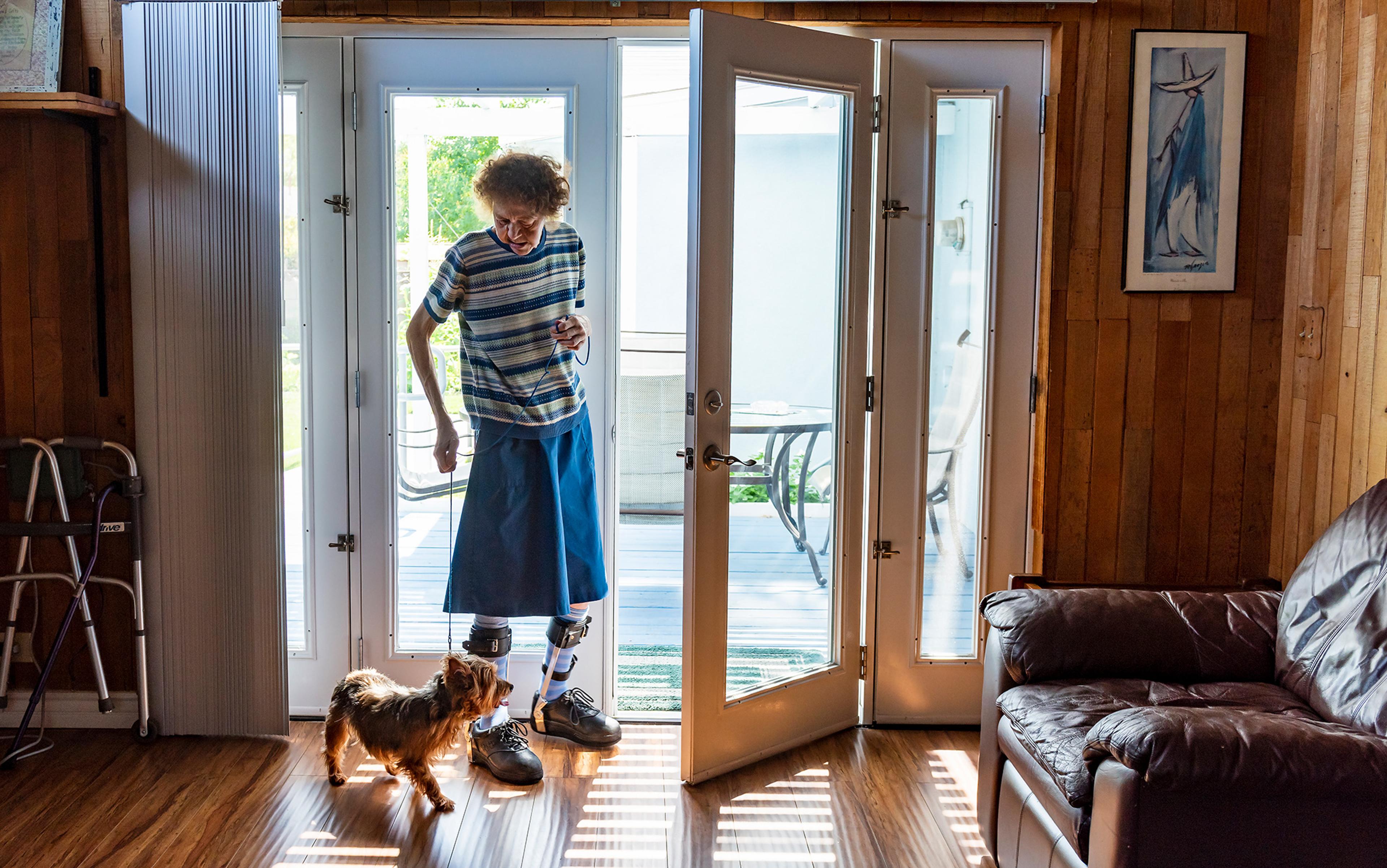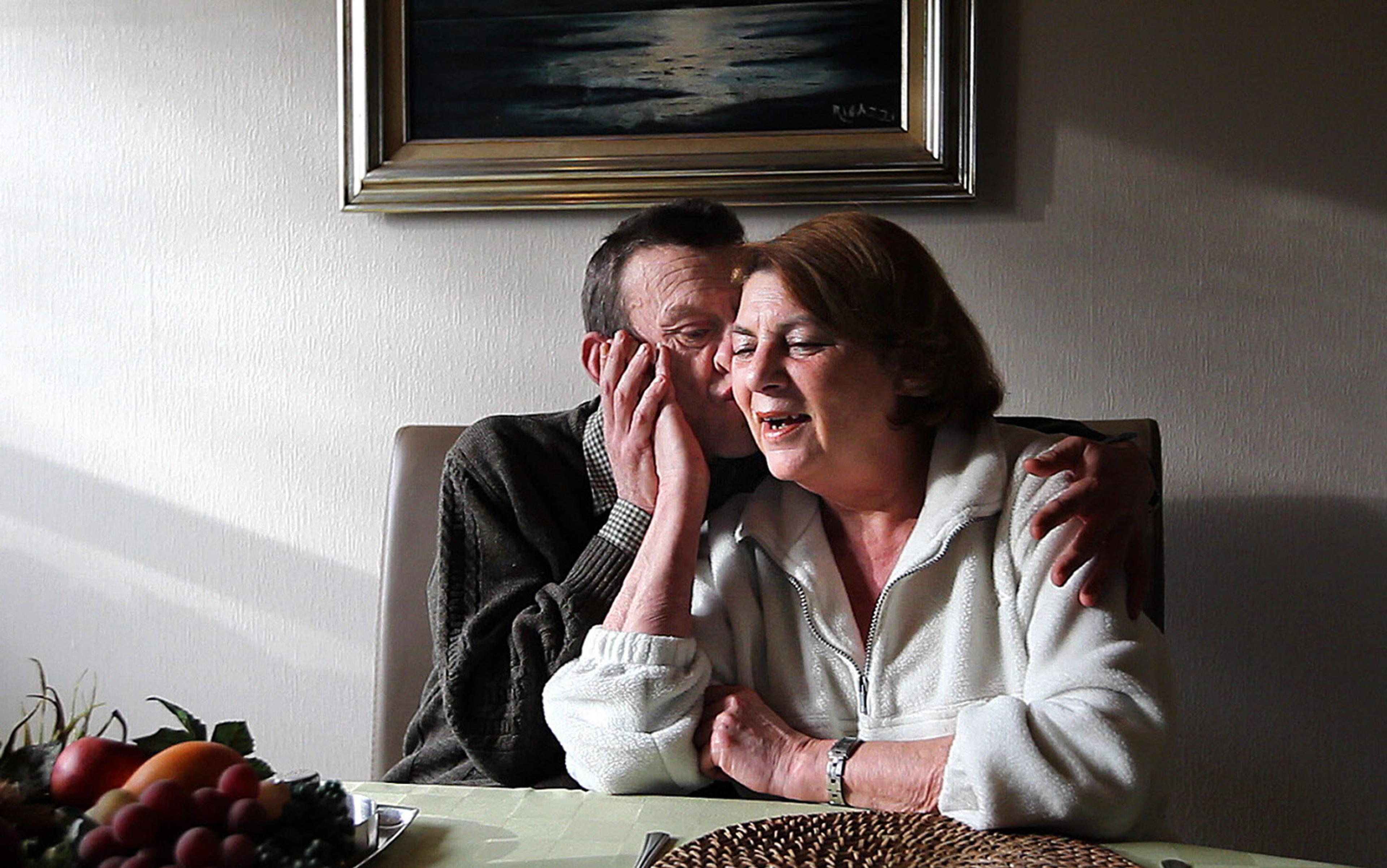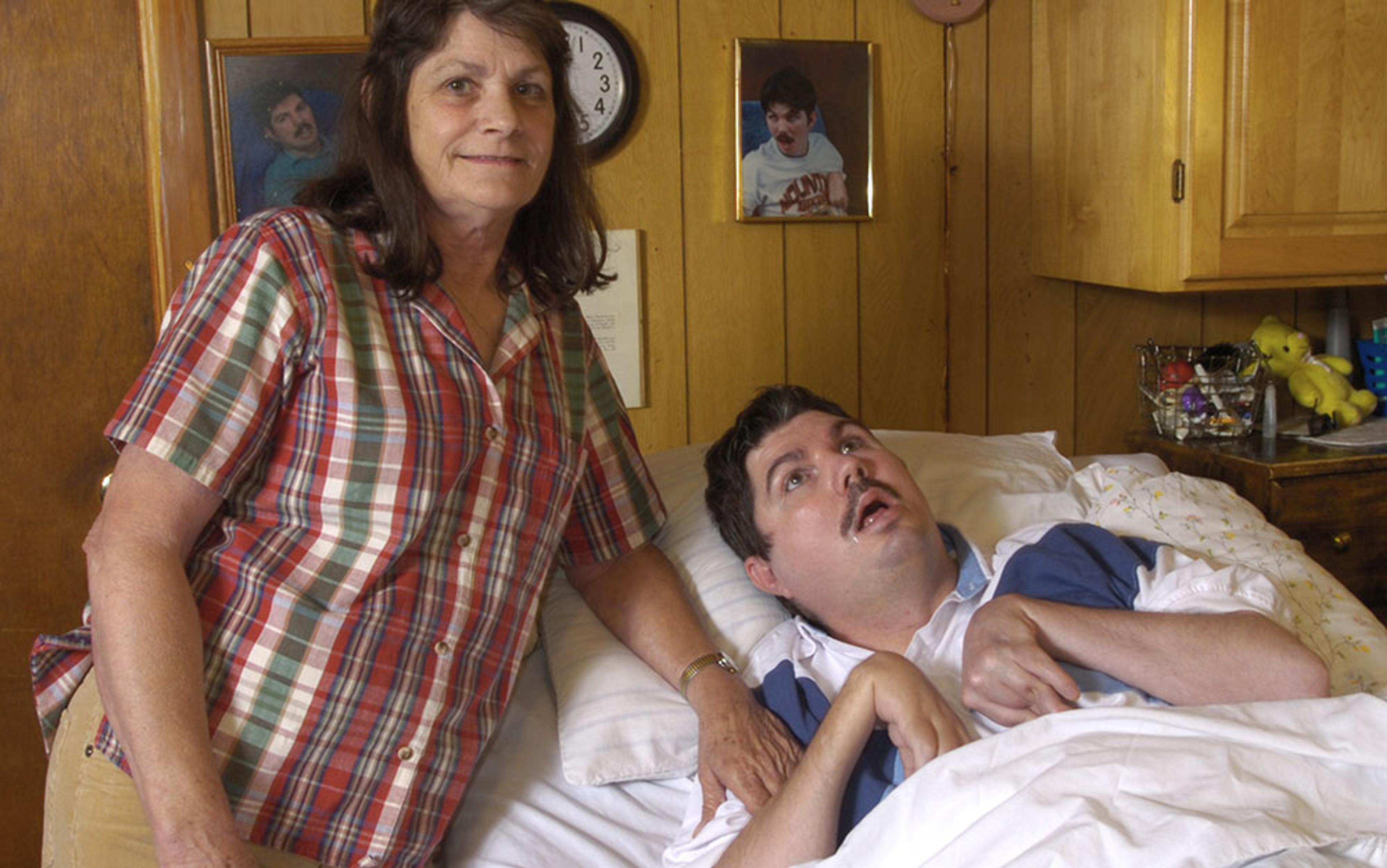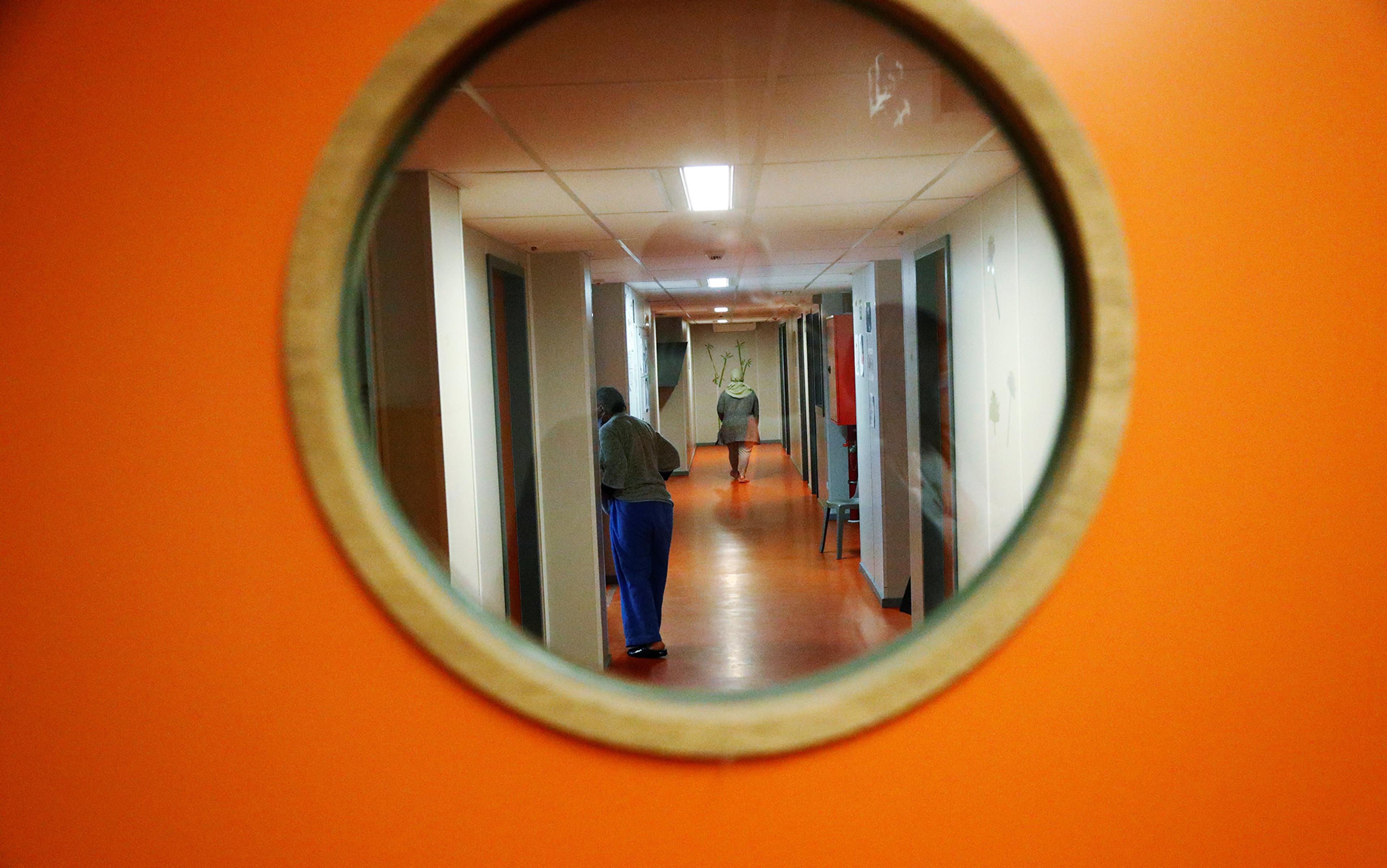Myra hears violent and upsetting voices that nobody else can hear; she struggles with hygiene and remembering to change her clothing. Unable to achieve employment, she receives a paltry monthly welfare payment that she spends almost entirely on rent. For that, Myra has access to a lice-ridden shared room in a private-market boarding home where fights break out regularly. Owing to certain symptoms of her illness, including profound disorganisation of her speech and thoughts, Myra has been deemed ‘incapable’ of managing her money, so a public trustee oversees her spending. Similarly, her psychiatrist believes she lacks the capacity to appreciate the benefits and risks of receiving or refusing treatment. Being estranged from her family, Myra’s treatment decisions are therefore made on her behalf by an appointed ‘substitute decision-maker’.
‘Myra’ is a fictionalised account (based on real cases) of contemporary life for a person with a severe and persistent mental illness (SPMI) – our preferred term given the important critiques of specific diagnostic mental illness categories on validity grounds. She is in receipt of the most comprehensive community mental health service for people with SPMI – known as assertive community treatment (ACT). Primarily available in North America, western Europe, Scandinavia, Australia and New Zealand, this type of treatment (which can go by different names in different regions) offers intensive outreach-based care to support living independently and safely in the community, with some clients seen as often as twice a day. To coordinate access to essential items (eg, food, shelter and clothing), services (eg, medical and dental care), and personal support workers for their clients, ACT teams rely on a mixture of private, public and not-for-profit services.
Severe and persistent mental illness impacts people differently. For some, robust social support and outreach-based mental health programmes can make a powerful difference to their functioning and quality of life. But an unfortunate few like Myra continue to suffer significantly, even with intensive support. Compounding her problems, imagine now that Myra starts collecting items she finds on the street and that soon her unit is declared a fire hazard. Myra now faces eviction and, because housing is so hard to find, she will likely end up homeless. In the past, she has had difficulty remembering to take her medication while staying in shelters, leading to instances of self-harm and significant injury, and so her life has been punctuated with periods of involuntary acute care hospitalisation.
Psychiatry today is tasked with the daunting responsibility of attending to the mental suffering of Myra, and countless others like her, with imperfect tools and a painful awareness of its own violent history. Despite more than half a century of pharmaceutical and psychotherapeutic treatment development, it’s not clear whether there are any medications or social interventions available to genuinely relieve the pain and harms experienced by some people living with severe and persistent mental illness. As Myra’s story reflects, the patchwork array of public, private and not-for-profit services that compose our community mental health ‘systems’ are so under-resourced and poorly designed, one can’t help but wonder how they could be fixed, or how they even came to be. Yet the reality today is that there is nowhere else for Myra to go.
How did we get to this wretched state of affairs? The historical roots of the current situation go back hundreds of years. For much of western European and North American history, there was no singular or overarching system of care for those deemed ‘mad’, comparable with the asylums or custodial institutions of the 19th and 20th centuries. Individuals in the medieval and early modern periods who had ‘bizarre’ ways of thinking or behaving tended to receive whatever level of care a family was willing or able to provide (which often meant none at all).

Bethlem Hospital in Moorfields, London. Photo courtesy the Wellcome Collection
The rise of proto-asylums in the mid-18th century catered exclusively to the wealthy and their comforts. These ‘madhouses’ owed more to a flourishing consumer society than to any centralised action of the state or tangible medical breakthroughs. Charitable asylums to ‘treat’ the poor emerged more slowly, and their so-called patients were treated with far more cruelty: held, often chained, in large galleries where abuse and physical violence were meted out daily. By the early 19th century, public outcry against the barbaric treatment of ‘the mad’ emerged independently and almost simultaneously across Europe and North America. Calls to radically reform institutionalised care were coupled with a rejection of treatments that had proven to be ineffective and medically unfounded. Reformers urged for a more humane approach where those deemed mad could find refuge from life’s cruelties.
Some suffered disrespect and domination, while others found pride and purpose in running farms and gardens
The most famous of these approaches, known as ‘moral treatment’, has a rich and eclectic history. Generally speaking, proponents of this model advocated for the avoidance of force and restraint, the salutary benefits of soft and hard skill development, and the modelling of kindness, reason and humanity within a familial atmosphere. The earliest models of moral treatment were pioneered by Quakers and were rooted in their religious commitments to equality, respect and community. Others were inspired by Enlightenment ideals and a strong conviction in the power of reason and behavioural conditioning.
Moral treatment spread rapidly across western Europe and North America owing to extraordinary claims of its success, as well as the growing role of state regulation, administration and funding. The new asylums were seen as triumphs of science and beacons of possibility for achieving utopian ideals. It’s important not to romanticise moral treatment, however, even in its ideal form. ‘Reconditioning’ the minds of people with mental illness through the ethos of self-control and discipline, some argue, merely exchanged one set of chains for another. Without any overarching system or regulation there was great diversity in size, quality and philosophy. Correspondingly, historical records show vastly different experiences among patients: some suffered disrespect and domination, while others found pride and purpose in running farms and gardens. Some asylums ran programming to cultivate residents’ passions and develop their skills in crafts, art and ideas. The oft-overcrowded asylums for the poor, on the other hand, offered few opportunities for leisure, let alone self-actualisation. And yet, testimony from former patients suggests that a meaningful sense of ‘community’ and belonging could still be found.
The incredible optimism of the early to mid-19th century soon fizzled: patient numbers quickly outpaced capacity, and the once-central notions of intimacy and community were abandoned in favour of large, sterile and impersonal environments. Therapeutically oriented labour degenerated into rigidly enforced work, and recreational programming was mostly eliminated. Rates of cure failed to materialise in anything like the proportions that had been promised, leading to disillusionment and backlash. Greater recourse was given to radical treatments that sedated and stupefied asylum residents – for instance, the lobotomy, which won its developer, Egas Moniz, the Nobel Prize in 1949, but has (rightly) become one of the most powerful symbols of psychiatric abuse. Decades of financial stringency and poor oversight, overdiagnosing, understaffing and overcrowding transformed these places into what the British-born sociologist Andrew Scull in 1990 called ‘warehouses of the unwanted’.
Many prominent historians agree that the impetus for deinstitutionalisation (the process of moving the care of people such as Myra out of institutions and into the community) was primarily financial in nature. Despite the hype around novel antipsychotic medications such as chlorpromazine (developed in 1951), the influence of treatment ‘breakthroughs’ over social policy was arguably minimal, and their benefits rarely lived up to their promise. As institutions became end-point destinations for a growing number of people, even the most derelict asylums were incredibly costly to run (grassroots and legal advocacy against the grave abuses found in these institutions also hastened their closure). In North America, expenses fell to local state and provincial governments who had little power or desire to generate more revenue through taxation or welfare state reform. New federal programmes in the United States, such as the Community Mental Health Act (1963) and Medicare and Medicaid (1965), incentivised states to discharge patients and defer costs to new federally funded community clinics, which ultimately failed to materialise in the quantity or quality that was promised.
In Canada and the United Kingdom, deinstitutionalisation policy unfolded with more explicit aims to reduce healthcare expenditures at all levels of government. Behind a rhetoric of human rights and freedom, politicians – already eager to rid themselves of the political baggage and financial burdens of asylums – emptied institutions before adequate resources and robust community services were secured. Intended as cheap alternatives, the ramshackle networks of private, charitable and government services that developed were both ill-equipped and unable to provide humane and continuous care to many people struggling with severe and persistent mental illness.
From this nadir in the 1970s, a series of community care models have emerged, the most enduring and well known being assertive community treatment. ACT teams intend to offer a ‘hospital without walls’ and provide around-the-clock, seven-days-a-week, multidisciplinary support to people with the highest needs. ACT operates from a chronic disease model of SPMI as characterised by alternating periods of acute illness exacerbation and (potentially lengthy) periods of stability. Correspondingly, the ACT care model is explicitly geared towards preventing re-hospitalisation.
ACT psychiatrists, nurses and social workers visit clients in their residences, in shelters, and on street corners if they can’t make it to the office. Case managers help clients cope with distress, attend appointments, develop life skills, access welfare benefits, reconnect with family and loved ones, and find recreational and social programmes. They also deliver and encourage clients to take medications but, if a client is mandated by law to do so, the looming prospect of hospital admission should they decline highlights the coercion that remains in community-based care. Indeed, the often-coercive mechanisms by which ACT clinicians try to achieve their core mission – to lengthen periods of stability between acute hospitalisations – highlight the double-edged sword of the ‘hospital without walls’ mantra.
Serious violations to liberty through omission and neglect persist
Needless to say, the lofty ideals of the ACT model have been brought down to earth by the complexities of real life. ACT teams work within fragmented community support and social service systems that place an impossible burden on clinicians. The ravages of poverty and inadequate resources to meet basic shelter and safety needs impose huge restrictions on how clinicians can meaningfully support their clients, whom they cannot protect from day-to-day violence and criminalisation. The comprehensive suite of health and social services once packaged together within the bricks-and-mortar of the asylum are incredibly difficult to access in the community given inordinately long waiting lists and the often mystifying bureaucracy behind the public, private and not-for-profit services intended to replace them.
Following convention in mental health research, one way to assess the quality of life afforded by current community care approaches is by considering the extent to which people with SPMI are free from constraint (ie, they have liberty) and free to self-govern (ie, they are able to exert autonomy). In these debates, liberty is often considered in the context of whether people are subject to involuntary hospitalisation, but there are broader issues to consider, such as whether people’s liberty is constrained by a lack of sufficient societal support (ie, constraint via omission – for a physical parallel, think of how the liberty of a wheelchair user is unduly restricted in the absence of ramps or other needed accommodations). Autonomy, on the other hand, is usually measured by people’s ability to exercise reason according to their own value system, regardless of the substance of their values, reasons or motives (for instance, choosing to ride a bike without a helmet would be to exercise autonomy while rejecting common sense). In healthcare, autonomy often, but not exclusively, is considered in the context of a person’s capacity to make important decisions about how they live their life.
Under the competing pressures of public safety and individual freedom as well as budgetary constraints and political will, finite resources and, perhaps most importantly, our incomplete knowledge of SPMI, it would be impossible to expect any system of care to fully enhance an individual’s liberty and autonomy. There are always going to be tradeoffs. Given the dearth of effective psychiatric therapies and treatment options for people with SPMI, this is especially true when it comes to mental health care. The key, as others have argued, lies in reaching the appropriate balance between allowing so much liberty that an excess of harm results, and so little liberty that people do not have enough control over their lives to make them feel meaningful or worthwhile. Superficially, the shift from asylum to community appeared to maximise patient liberty. Our view, however, is that a blinkered, and at times insincere, promotion of liberty in the mental health system has led to situations for people with SPMI in which excess harm occurs and opportunities for flourishing and a life well lived are unduly restricted. What’s more, serious violations to liberty through omission and neglect persist.
According to some proponents of the ‘rights revolution’ of the 1960s and ’70s, people with SPMI, then freed from the asylum, were able to exercise their autonomy and live in closer alignment with their values in ‘the community’ – a term as commonly used as it is ill defined in contemporary mental health policy and clinical practice. ‘Discharging someone to the community’, for example, refers simply to a range of potential settings other than bricks-and-mortar institutions, such as hospitals, rehabilitation or long-term care facilities, jails or prisons. Given high rates of incarceration, homelessness, hospitalisation and compulsory outpatient treatment, the cold reality is that people with SPMI who reside in the community are rarely ‘deinstitutionalised’ in a meaningful sense. Their lives have instead been subsumed by the revolving door of the so-called ‘invisible asylum’. The ‘freedom of choice’ that they ostensibly enjoy in the community generally implies that they have the benefits of consumer choice, yet – given that many live in deep poverty – such freedom is arguably meaningless. Meeting basic needs often means choosing between what’s cheap, free or simply going without. Without access to essential material and social resources, one is not truly free to make decisions, big or small.
Life in the community can entail a great deal of risk and vulnerability
Many individuals with SPMI experience repeated and at times frequent psychiatric admissions, even when supported by an ACT team. For some, hospitalisation comes with the provision of basic necessities not afforded to them in the community, but at the expense of their liberty: regular meals, safety from violence, a clean environment, and daily structure and routine. Acute care hospitalisations are often undertaken involuntarily, and locked seclusion, chemical and physical restraint can be used in cases of extreme behaviour after attempts at verbal de-escalation have proven ineffective. Even when people stay voluntarily, wards are often locked and freedom of movement is restricted.
Given the limitations of available treatments for some people with SPMI, hospital admissions are often geared toward a return to ‘baseline’ (ie, someone’s expected level of functioning when receiving their usual treatment and support), while care in the community aims to manage symptoms and minimise associated risks that persist at someone’s ‘baseline’. In both settings, the known harms of antipsychotic drug treatment – including significant (and often long-term) side effects, such as sedation, movement disorders, dramatic weight gain or metabolic derangements such as diabetes – can often outweigh the expected benefits for some people at certain points along their care trajectory. Today, people with SPMI can be at risk of aggressive, potentially harmful overtreatment early in their involvement with the mental health system. Later – after suboptimal or negligible responses to available therapies, and in the face of persistent psychological suffering and associated disability – they are at risk of therapeutic neglect, coloured in part by burnout and therapeutic nihilism among caregivers, and in part by a dearth of suitable models and care settings.
Life in the community can entail a great deal of risk and vulnerability. Priced out of safer parts of the city, people with SPMI – more commonly victims of violence than they are perpetrators – are forced to live in highly concentrated areas where violence is commonplace. High levels of stigma compound the social isolation experienced by many with SPMI, and any sort of social connection or community participation can be challenging due to histories of abandonment and broken trust.
The current system clearly isn’t working, so where do we go from here?
Some commentators believe that unresolved mental distress and suffering could be largely mitigated, if only there were adequate investment in healthcare and the social determinants of health. Others contend that community care lacks a coherent vision and has never been properly designed or conceived. At a time when public programmes have been gutted and important social responsibilities have been shunted to the private sector, it is difficult to assess whether a lack of political will is denying community-based programmes their full potential, or if there are intrinsic shortcomings to the community care model itself.
Yet another camp explicitly suggests, as Oliver Sacks once argued in his essay The Lost Virtues of the Asylum (2009), that there were truly salutary aspects of life in some of these institutions – and that what they needed was fixing, not dissolution.
No one could reasonably contest the importance of access to safe, affordable housing, a liveable income for all, and meaningful social inclusion. Yet we believe that weighing the current realities of material deprivation against an ideal vision of robust social support and fully funded community programmes represents a false dichotomy. These political achievements are unlikely to be adequate for those whose care needs are highest and who suffer most from enduring distress, severely limited organisational capacity, great difficulty regulating their emotions and persistent disability. For that reason, we suggest a ‘both/and’ approach, one that involves addressing social and material drivers of poor mental health and providing quality community care, while also considering what further residential supports might still be required for those with the highest needs.
Holding a clear understanding of what it would take to offer safe, dignified and meaningful conditions of life for people with severe and persistent mental illness is a necessary part of developing the political will to do so – even if what we wind up with falls short of our ideals. While vague utopian fantasies about maximising liberty and autonomy can lead us astray, excessive cynicism can also fuel self-fulfilling prophecies that stymie real change. Building from the virtues and advances made in community mental healthcare, we believe that permanent housing for individuals with SPMI must also be tailored to their needs and values.
A residential environment of this sort will require a broad range of social, medical and support services. Recreational programming might add therapeutic structure to the day, but activities could also be available for residents to pursue their interests and curiosities at will. Animal husbandry or horticulture could take the form of therapy or work for those who are interested – one of many opportunities where work could be offered as a meaningful activity, not as an expectation or survival necessity. Personal support workers would be required to assist individuals with everyday tasks, and the 24/7 need for well-trained caregivers capable of crisis de-escalation and supporting people in extreme states cannot be overemphasised. Timely access to medical and psychiatric care, coupled with these improvements to the social determinants of health, could make meaningful inroads in closing the mortality gap that exists between people with severe and persistent mental illness and those without.
We can’t have it both ways – there is no solution that is both cheap and ethically sound
Taking stock of the intensity and quality of support that we argue to be necessary, a facility of this kind would certainly fulfil certain definitions of an ‘institution’. While history is rife with examples of institution-based coercion and cruelty, they can and must be run differently. To this effect, adequate funding, well-paid and well-trained staff, incorporating resident input and strong oversight bodies are vital. The Worcester Recovery Center and Hospital in Massachusetts, once lauded as an exemplar of humane and dignified psychiatric care, illustrates the hazards of prioritising ‘cost-efficiency’ over quality. A failure to provide adequate training in violence prevention and crisis de-escalation, along with critical staffing shortages, have undermined the facility’s mission and jeopardised the safety of nurses, staff and residents alike.
However, fruitful counterexamples of more successful institutional settings can be found in innovations in dementia care in the US and in the Netherlands. Nestled in the small town of Weesp in northern Holland, De Hogeweyk is an elder-care facility for people with advanced dementia that is curated to look and feel like home, down to the finest detail. While basic necessities and meals are provided, residents can shop for clothing and food in on-site stores. These transactions don’t always involve money, but they do allow residents to exercise their tastes and preferences. Visitors are commonplace, and can join their loved ones for art or cooking classes, concerts or a film in one of the on-site theatres. The cost of housing someone at De Hogeweyk is similar to that of more traditional Dutch nursing homes, and it’s run and funded primarily by their government.
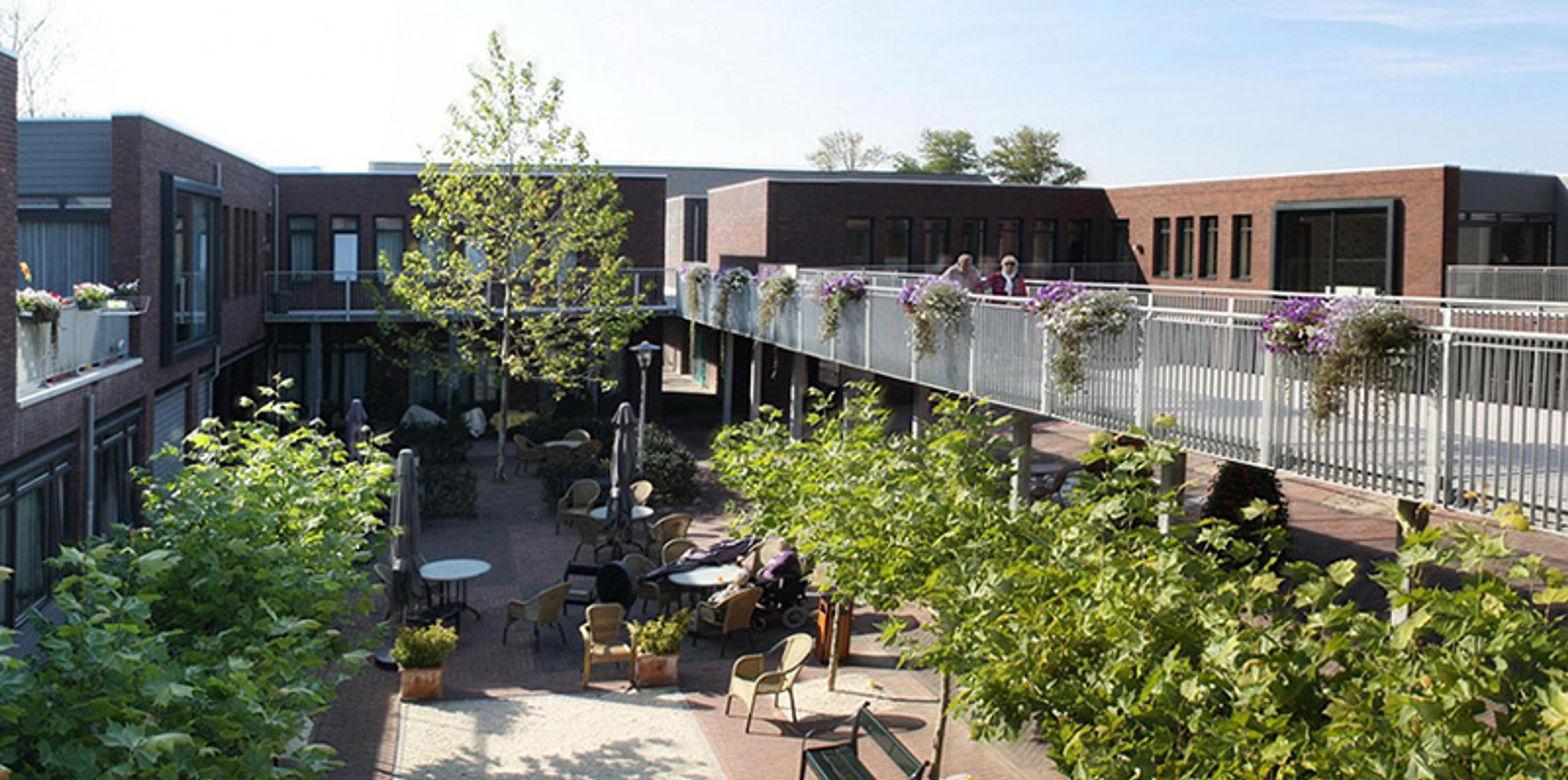
The De Hogeweyk elder-care facility for people with advanced dementia, Weesp, Holland. Courtesy Buro Kade Architects, Holland
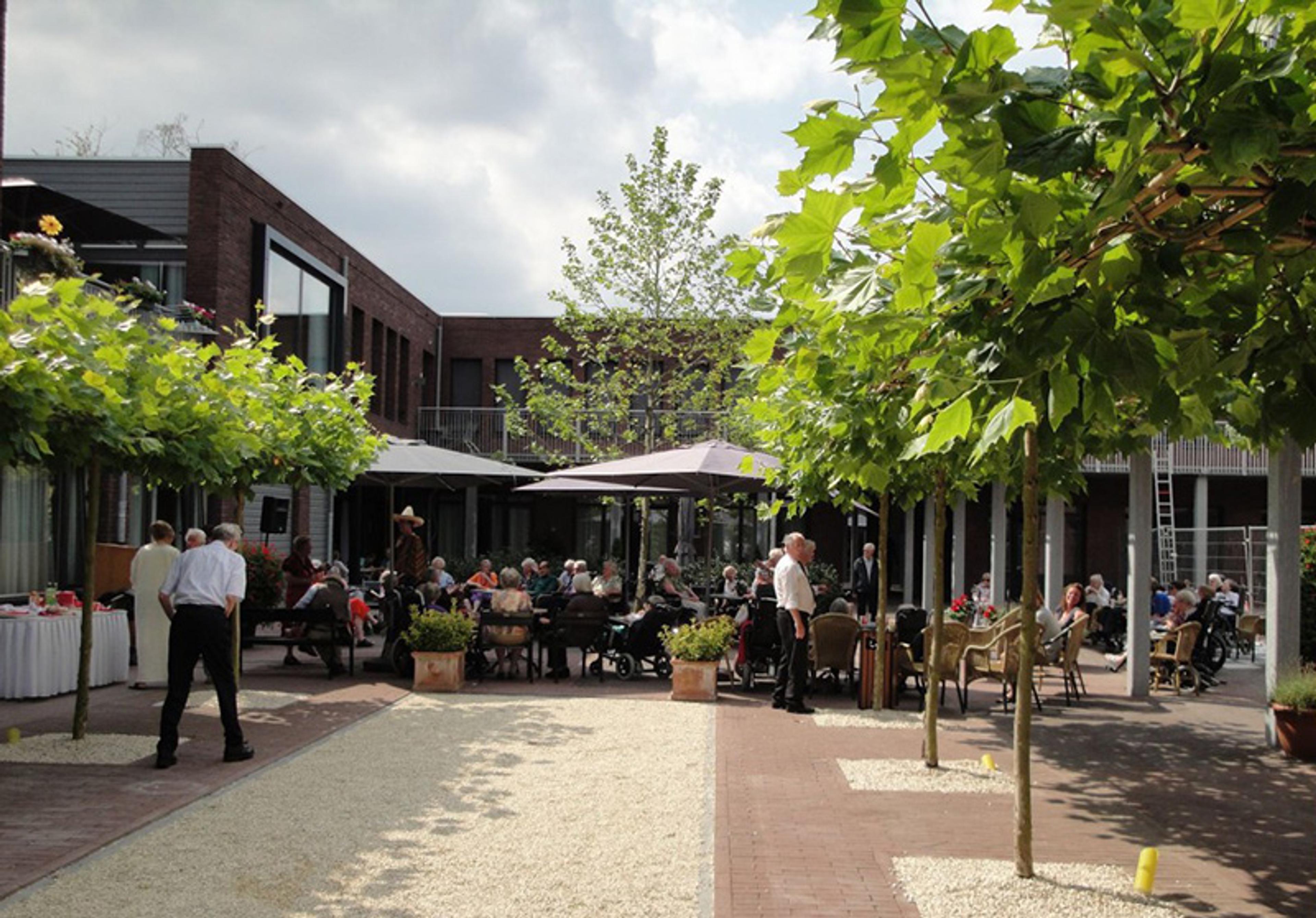
De Hogeweyk. Courtesy Buro Kade Architects, Holland
Modest prototypical settings for people with severe and persistent mental illness that are similarly well designed and resourced as this Dutch elder-care facility exist already, for example the Peace Ranch in Ontario, Canada. Scaling up this model and expanding it to meet a wider range of needs would no doubt be costly, but we can’t have it both ways – there is no solution that is both cheap and ethically sound. A truly humane approach to care is antithetical to profit-seeking motives that trade in the misery of others – it recognises all people as equally deserving of safety, pleasure and dignity. Government funding and associated oversight and regulation are thus key, and would protect people with severe and persistent mental illness against the sorts of pitfalls that beset private, financialised long-term-care facilities for the elderly.
In his 2009 essay, Sacks wrote about how the benevolent paternalism of the long-stay psychiatric institution could offer asylum in a genuine sense – and perhaps more than that, the freedom ‘to be as mad as one liked and, for some patients at least, to live through their psychoses and emerge from their depths as saner and stabler people’. In keeping with this sentiment, reimagined residential facilities for people with severe and persistent mental illness must foster a culture of true social inclusion, and a sense of home. For those who struggle most with basic tasks, hygiene and personal safety, such settings would offer marked improvements in quality of life when compared with repeated involuntary stays on psychiatric wards, or the exploitation and violence that can be experienced in ‘the community’. Robust mental health legislation would need to maintain strong checks and balances on a substitute decision-maker’s ability to decide where someone with severe and persistent mental illness ought to live, but such programmes would certainly not represent an endpoint for all such people: many could graduate or leave when they are prepared or choose to do so.
One might call these facilities supportive mental health housing, psychiatric long-term care facilities, asylums or something else. While this model would inhibit certain liberties – residents’ freedom from constraint – doing so would strongly promote a significant set of autonomy-enhancing freedoms. By ensuring that important social and material needs are met, people with severe and persistent mental illness would be able to exercise more choice in their daily lives, develop skills and passions, and build meaningful relationships in service of a life well lived. Don’t we all deserve as much?
To read more about the history and philosophy of mental illness, visit Psyche, a digital magazine from Aeon that illuminates the human condition through psychology, philosophy and the arts.
